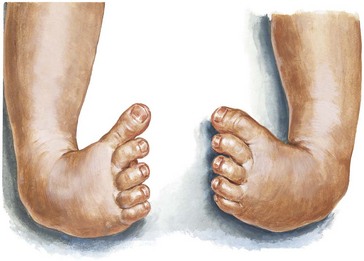Chapter 1 Genetic disorders, birth defects and structural deformities
Case 1.1
A regular patient on a routine visit brings Adam, her 4-week old son, with her. You notice that his foot appears ‘twisted’. It is held in the inverted position, and passive movement of his foot in the direction towards the front of the leg is very limited. Your patient has already seen her medical practitioner, who told her the name of the condition. Adam’s foot is shown in Figure 1.1.










